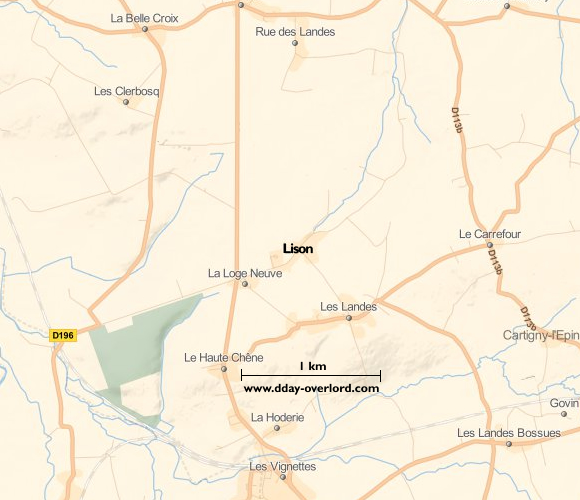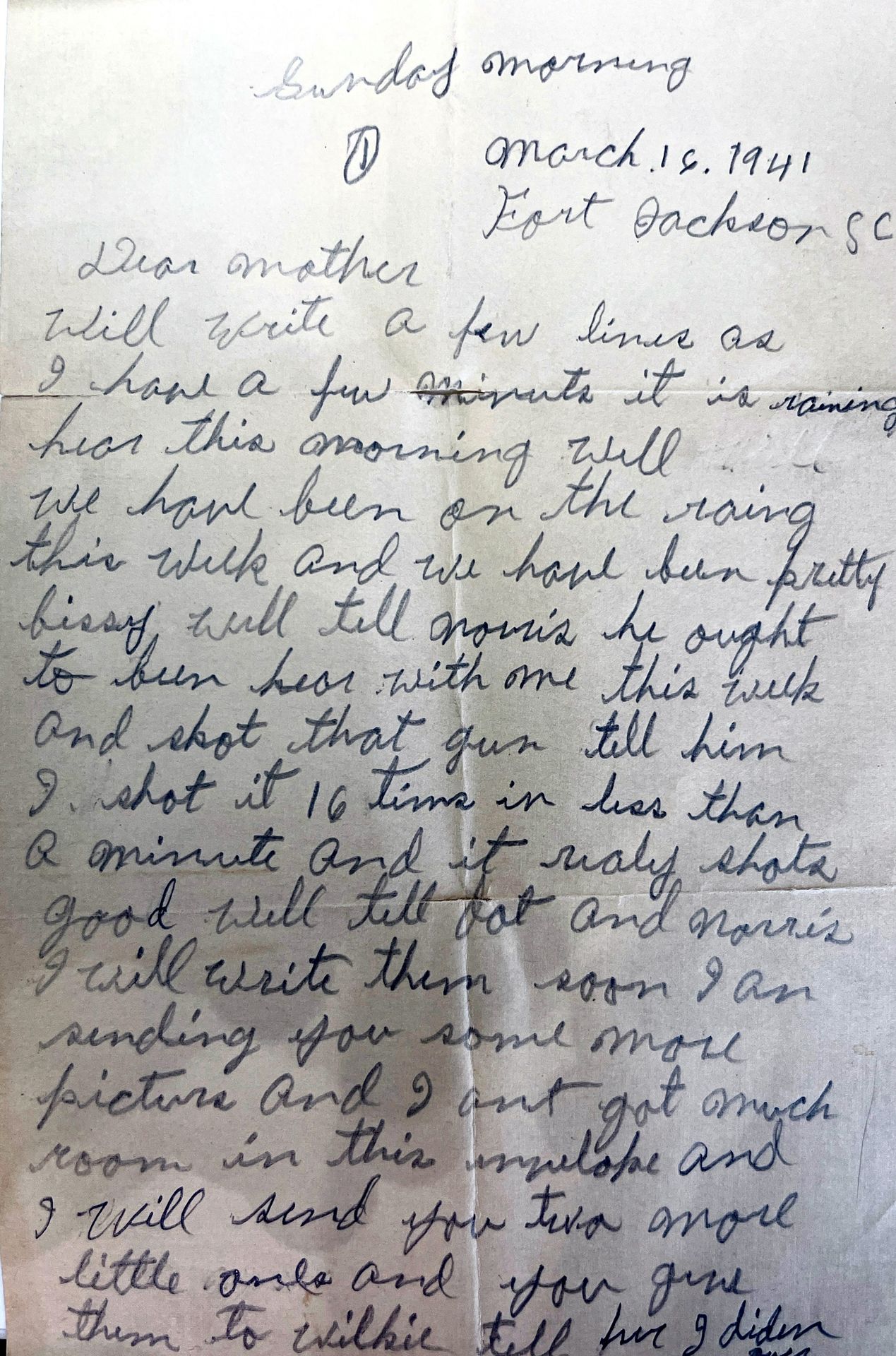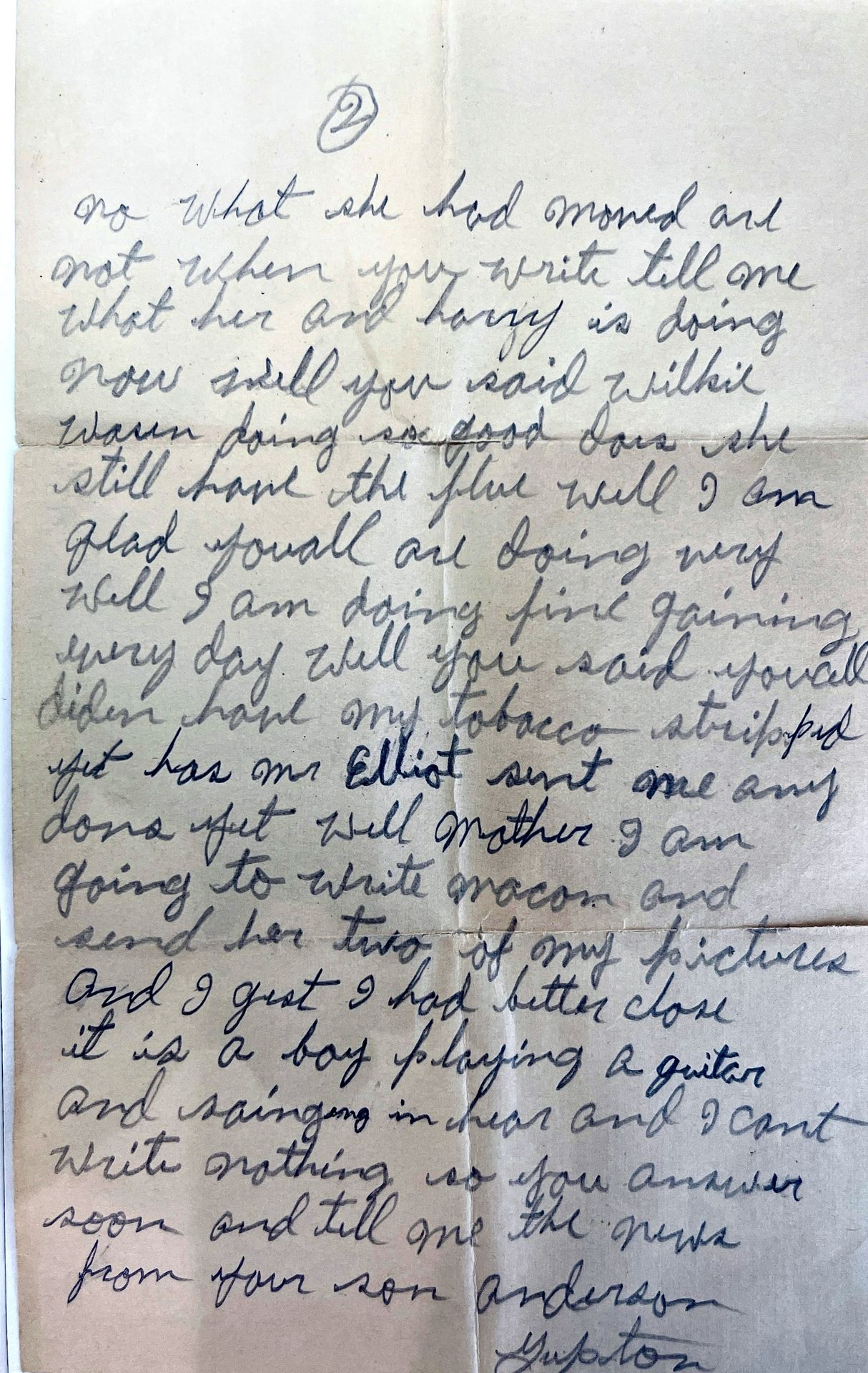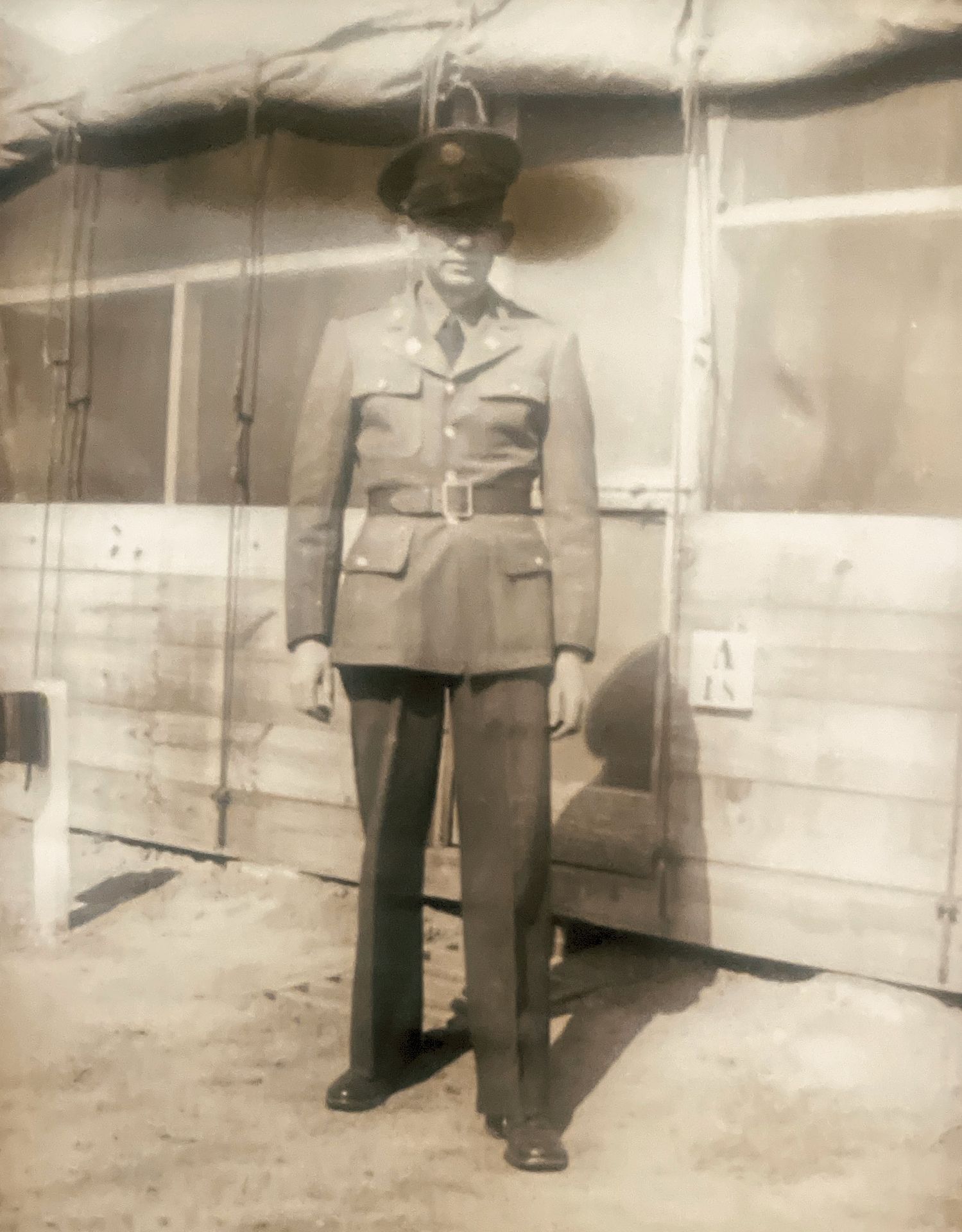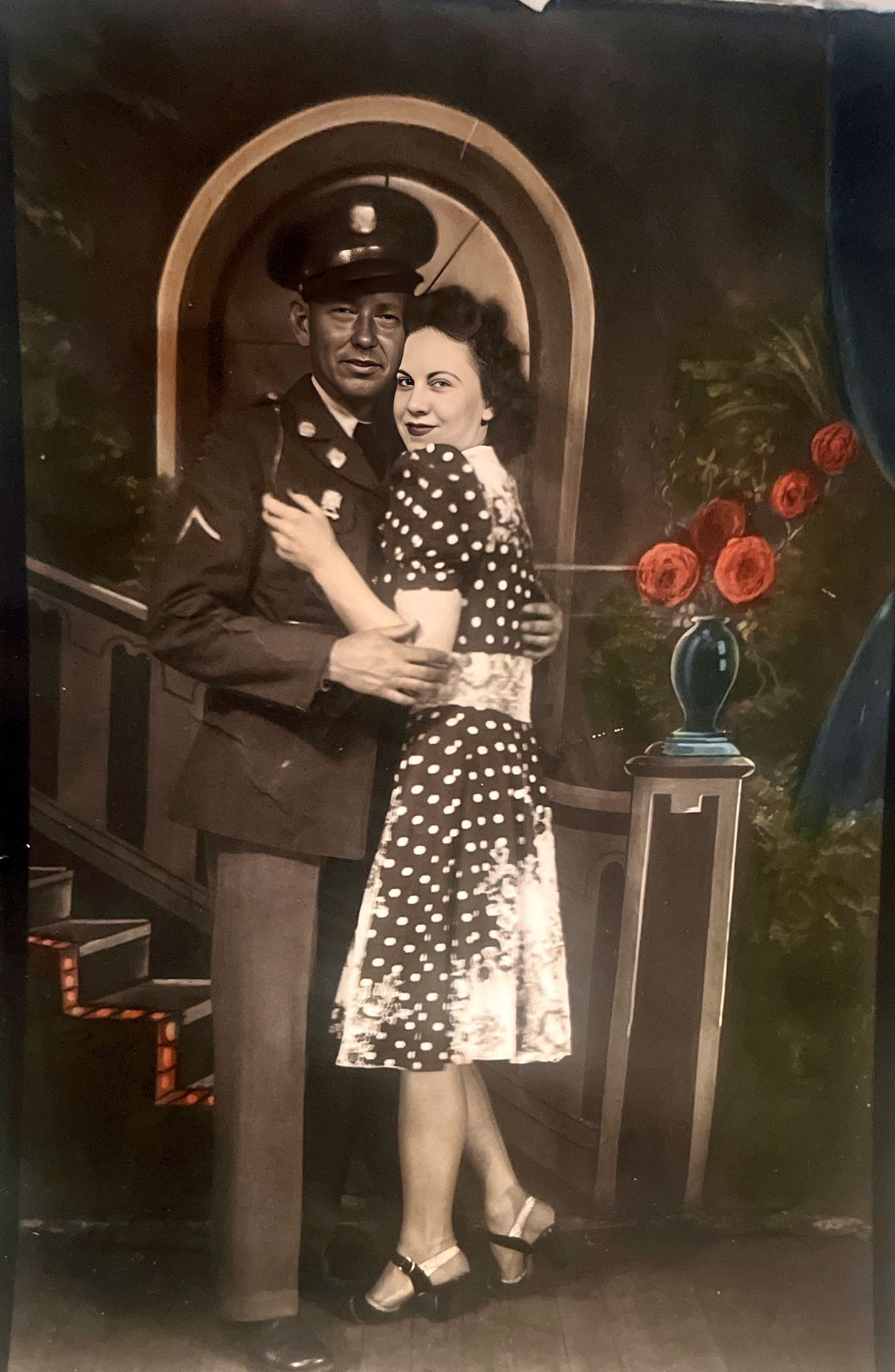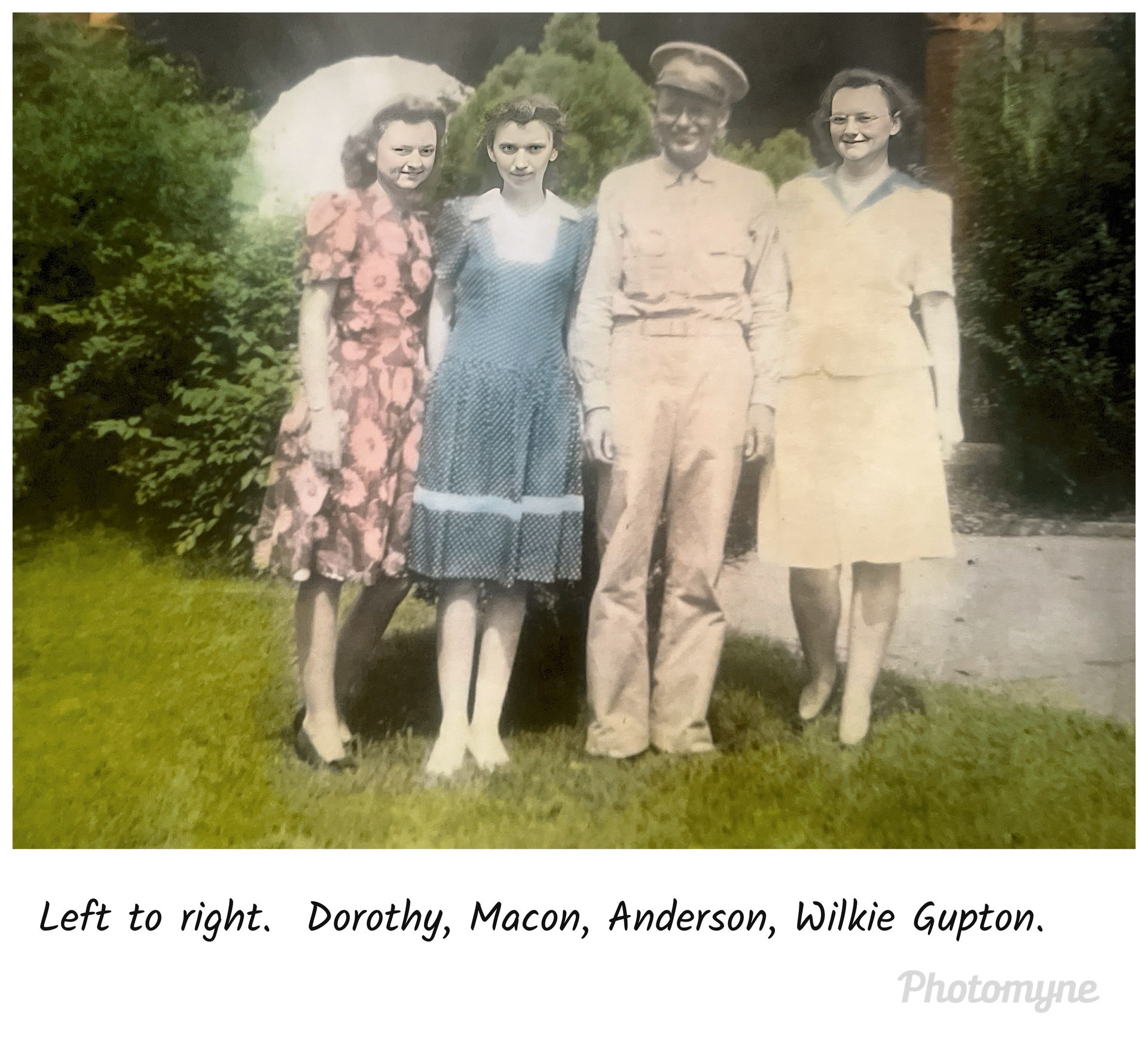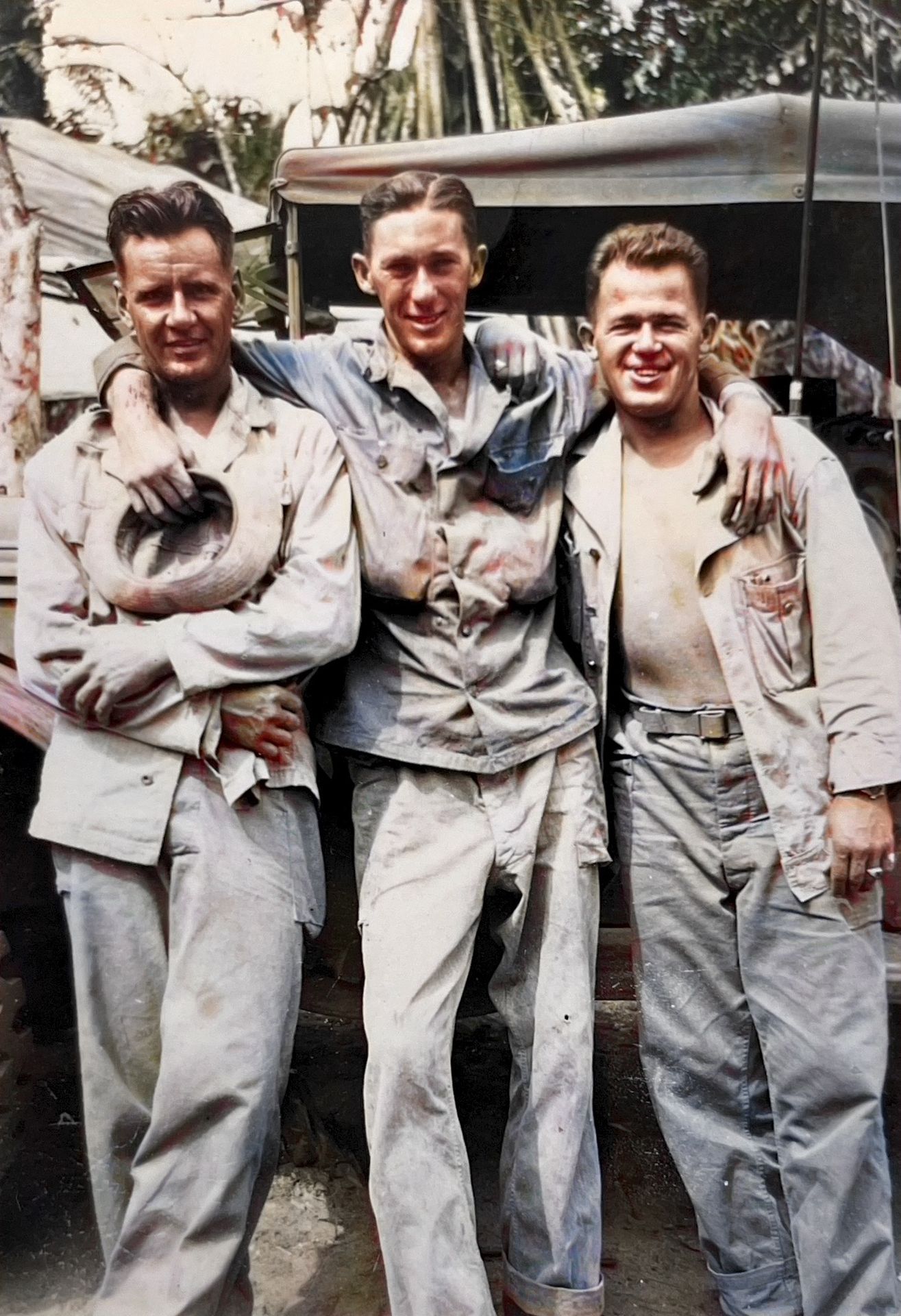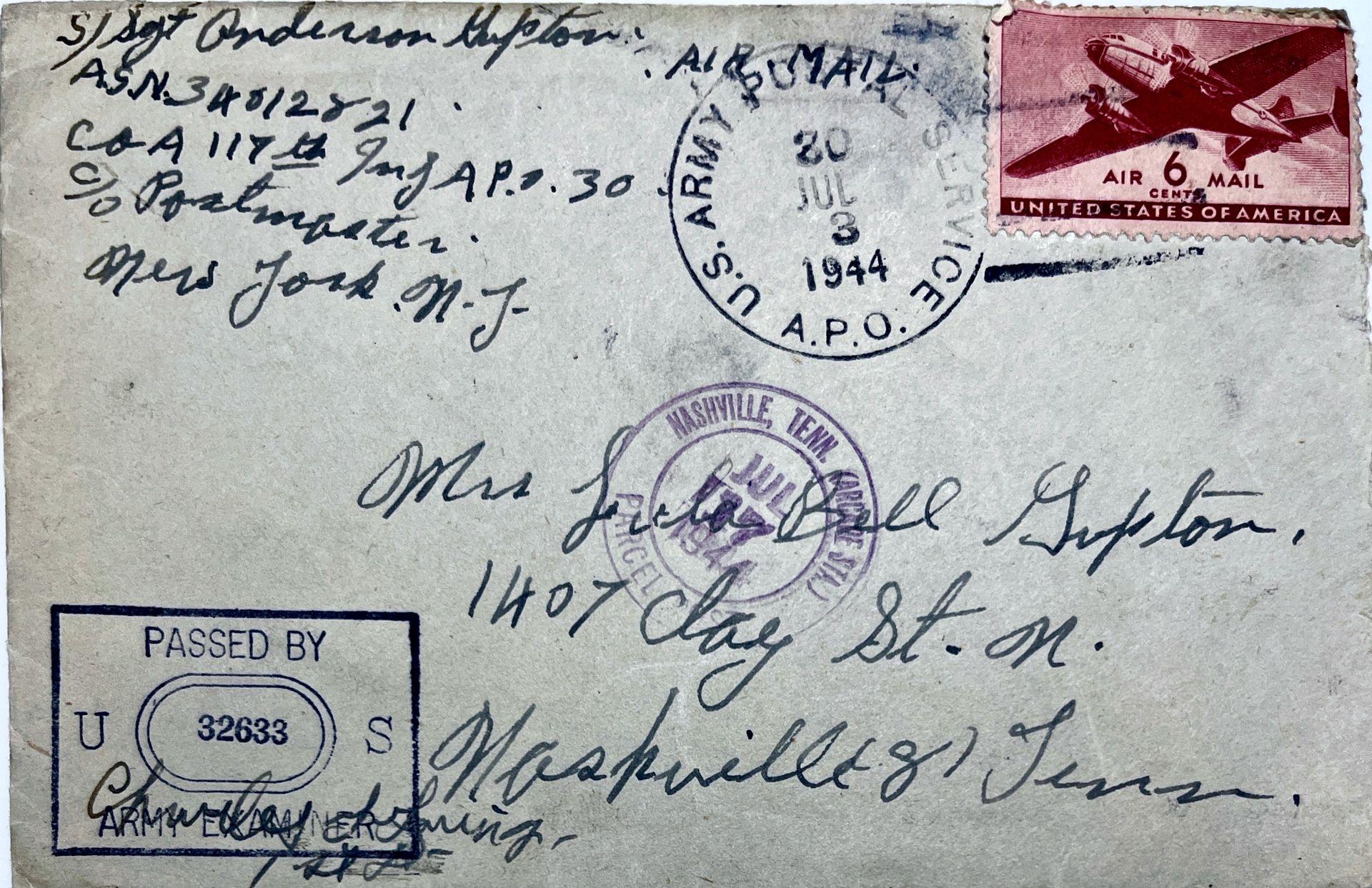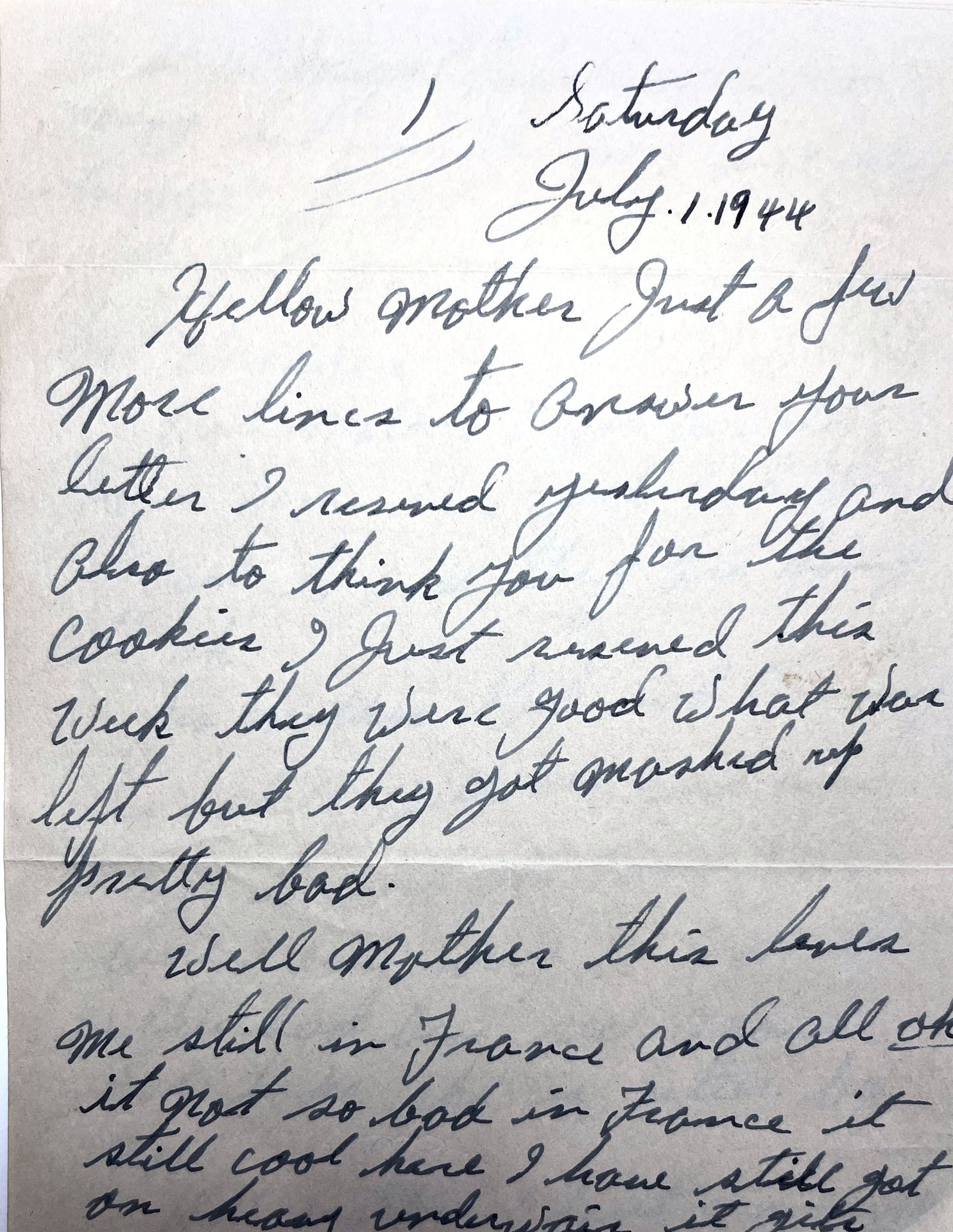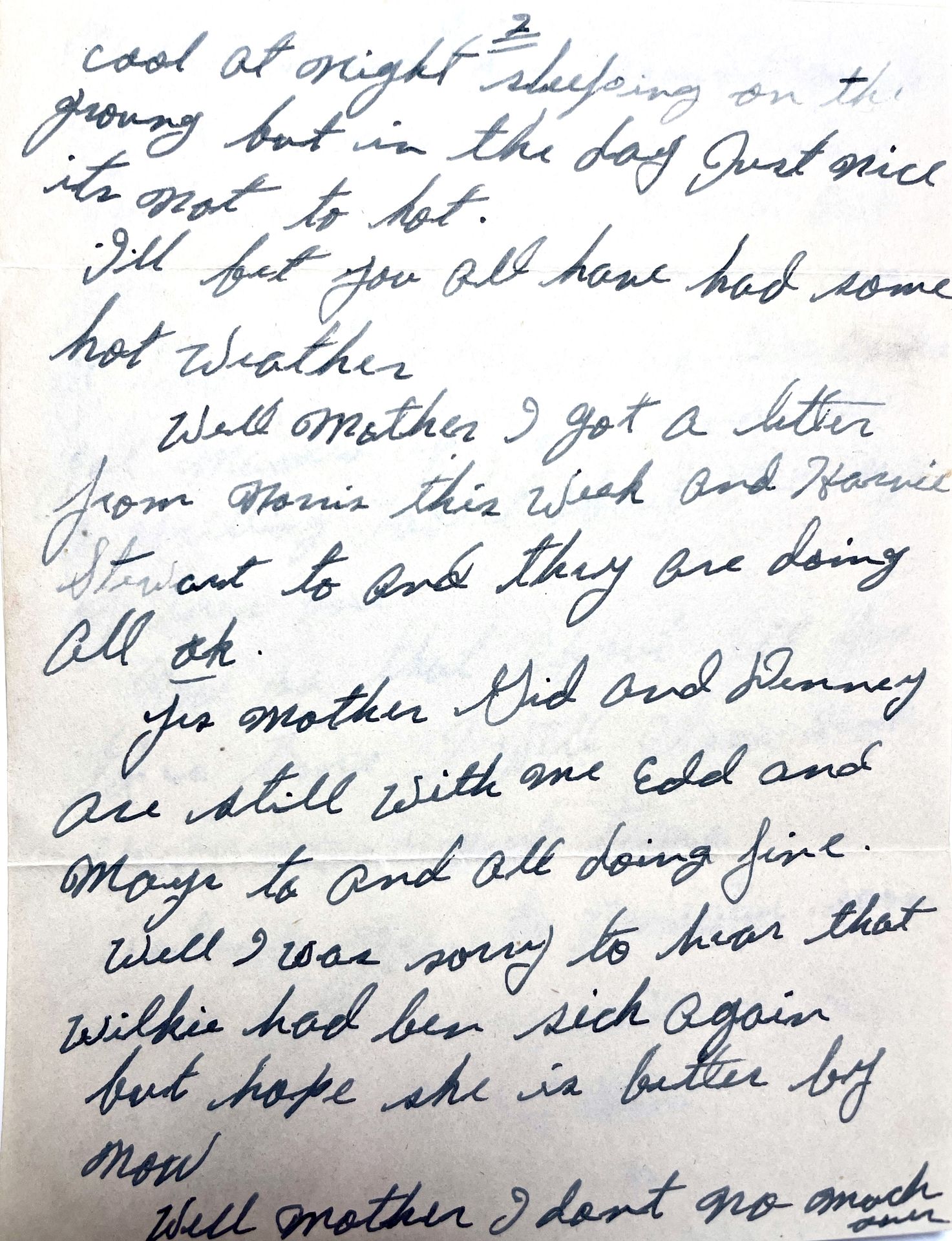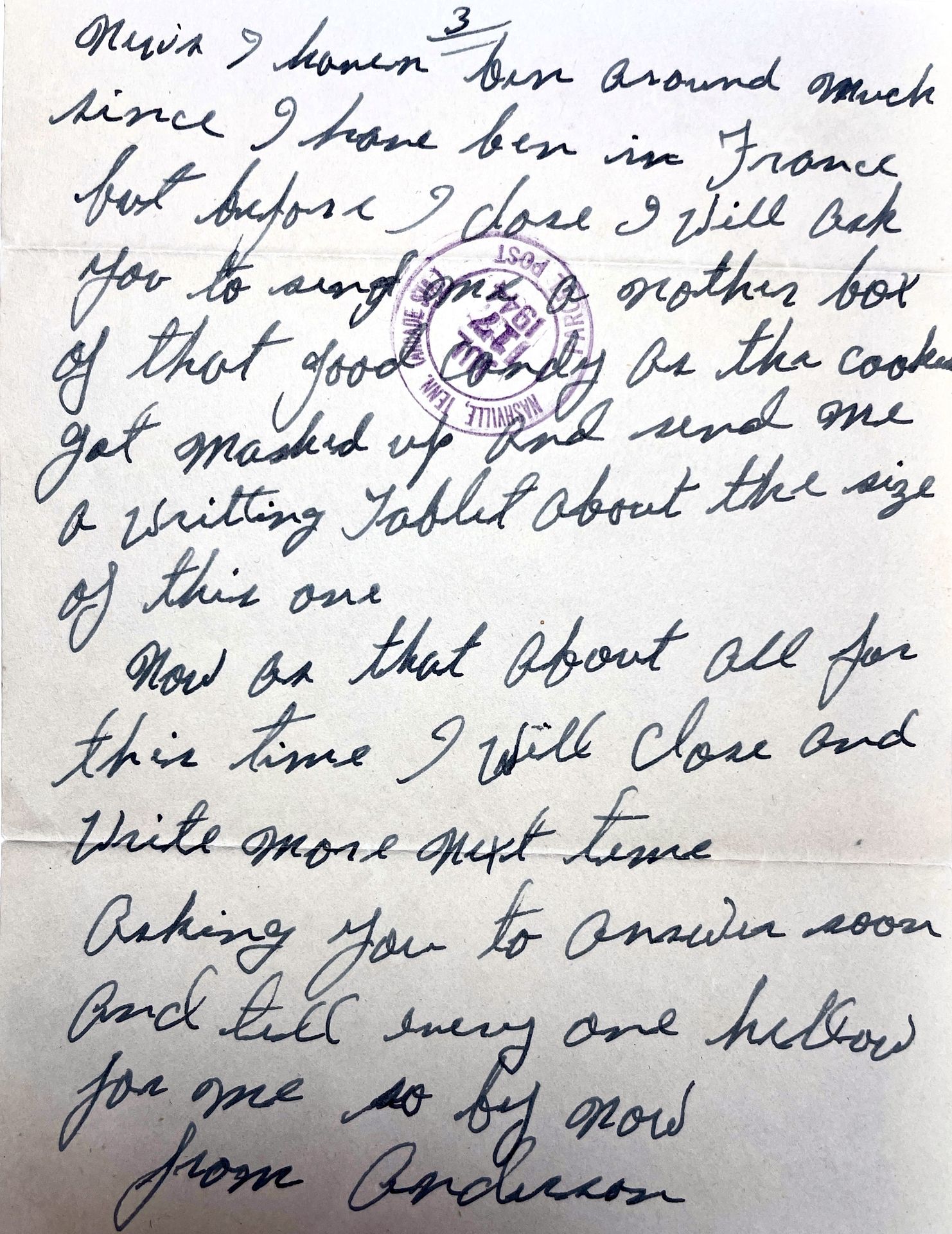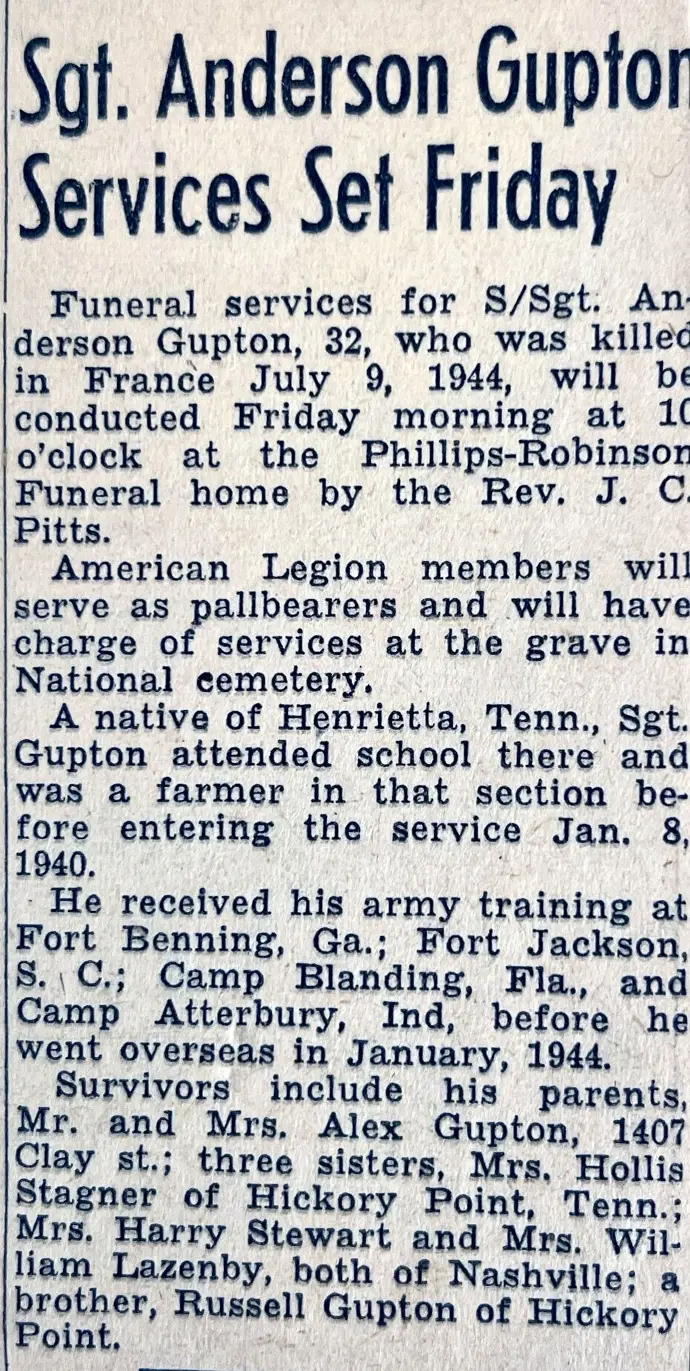Anderson Gupton
Military
Anderson Gupton
US Army, World War II
117th Infantry, 30th Infantry Division
Enlisted
- Jan 11, 1941 - Ft Oglethorpe, GA
- Assigned to 30th Division
- Post Office Address - Ft Jackson, South Carolina
FIrst Letter
- Mar 16, 1941 from Ft Jackson, South Carolina
Early Photos
Notice Change of Address
- Nov 5, 1943
- Sgt Anderson Gupton
- Company A 117th Infantry
- A.P.O. #30
- C/O Postmaster Nashville, Tenn.
History of 117th Infantry
WORLD WAR II
On September 16, 1940 the 117th Infantry Regiment from Tennessee was inducted into federal service at home stations for a period of one year. The Regiment was moved by train and arrived in Ft Jackson S.C. on 24 September 1940 as part of the 30th Division once again. The Regiment was housed in pyramid tents at Fort Jackson. Colonel Grant A. Schlieker assumed command of the Regiment on August 12, 1940. In October 1940, the unit was filled by Selective Service with men primarily from the Knoxville area.
The 117th Infantry moved by motor convoy to Dixie, Tennessee on 27 May 1941 for the VII Corps Tennessee Maneuvers. The Regiment returned to Ft Jackson S.C. on July 5, 1941. The Regiment along with the rest of the National Guard soldiers inducted in 1940 was extended for the duration of World War II. The Regiment then moved to Chester S.C. on September 27, 1941 for both the October and November 1941 Carolina Maneuvers. The 117th Infantry Regiment as part of the 30th Division returned to Ft Jackson S.C. on November 29, 1941 where the 30th (Old Hickory) Division was redesigned as the 30th Infantry Division.
On February 16, 1942 the 30th Infantry Division arrived at Camp Blanding, Florida for extensive Infantry Training. On September 12, 1942, the 117th Infantry Regiment was ordered to the Infantry School, located at Fort Benning, Georgia, to furnish troops for demonstration purposes and to assist instructors in the training of officer classes and the Officer Candidate School (OCS). The 117th Infantry Regiment moved back to Camp Blanding, Florida by motor convoy on February 28, 1943 to conduct training designed to physically harden the troops.
They moved on May 30, 1943 to Murfreesboro Tennessee. Starting on September 4, 1943, the Regiment participated in the Second Army’s No.3 Tennessee Maneuvers. On September 7, 1943 the 117th Infantry Regiment returned to Camp Forrest (Arnold AFB today), near Tullahoma, Tennessee.
The 117th Infantry Regiment arrived at Camp Atterbury, Indiana on November 14,1943 to complete their final phase of training. The 117th Infantry Regiment departed Camp Atterbury and arrived at the staging area in Camp Myles Standish, Massachusetts on January 29, 1944. The Regiment departed from the Port of Boston, which was the Port of Embarkation, on the USS John Ericsson on February 12, 1944. The 117th Infantry Regiment disembarked in Liverpool, England on February 24, 1944.
In England, from February 25, to April 5,1944 the Regiment was quartered in Niessen Huts near Petworth, England and undertook extensive Infantry training. From April 6 to June 9, 1944, the Regiment was billeted in the town of Berkbamstead, England and completed their final training before entering combat in Normandy.
On "D-Day" June 6th, 1944 the Regiment was alerted for movement to France. The Regiment moved to the staging area in Southern England where a briefing was given on the general situation, then moved to Southhampton dock for loading.
The 117th Infantry Regiment crossed the English Channel and landed on Omaha Beach in Normandy on D+4, June 10, 1944. The Regiment initially moved into a Staging Area near Lison, France. The Regiment remained here until July 2, 1994. The first casualties of World War II were suffered here as a result of German 88mm fire on the Staging Area. The Regiment’s initial mission was to replace some of the units of the 29th Division, which had been almost immediately lost on D-Day. The balance of the 30th Infantry Division went into Normandy and was almost immediately committed to action against the German Army.
THE NORMANDY BREAKOUT
The 117th Infantry Regiment attacked across the Vire River along with the 120th Infantry at 04:30 AM the morning of 7 July 1944 as part of the initial breakout from the Normandy Beachhead. They assaulted across the Vire-Taute Canal on July 7, 1944, establishing a bridgehead toward Les Landes, east of St Jean-de-Day, which the 3rd Armored Division passed though the Regiment to conduct exploitation operations.
The Regiment repulsed a major German Counterattack conducted by the German Panzer Lehr Division the night of July 7, 1944 and again during the morning of July 9, 1944. The Germans suffered heavy losses as the result of the Tennessee guardsmen’s tenacious fighting and accurate fire.
As the 117th Infantry advanced on St Lo, as part of the 30th (US) Infantry Division, it checked a German counterattack along the main Hauts-Vents Highway July 11, 1944 and Pont Hebert fell after protracted fighting July 14, 1944. Patrols reached the Periers-St Lo Road by July 18, 1944.
Last Letter
- Jul 1, 1944 from France
SSgt Anderson Gupton
- Killed in Action - July 9, 1944
- Near the Vire River in France
SSgt Anderson Gupton
Killed in Action - July 9, 1944
Near Vire River, France
See Normandy Breakout in 30th Division History Above
List of KIAs - See Page 80
